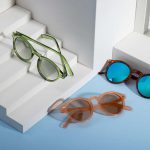Discovering that your child needs eyeglasses can evoke a myriad of emotions for parents—concern, confusion, and perhaps a touch of apprehension. However, it’s crucial to recognize that early vision correction plays a pivotal role in your child’s overall development and well-being. As daunting as this may seem, rest assured that you’re not alone on this journey. This parent’s guide to eyeglasses for children aims to navigate you through the process with ease and confidence. From recognizing the signs that your child may need glasses to navigating the eye exam process and selecting the perfect pair of kids’ glasses, we’re here to provide expert advice and reassurance every step of the way.

Signs Your Child May Need Eyeglasses
Common Behavioral Signs
- Squinting: Your child may frequently squint, especially when trying to focus on distant objects or while engaging in close-up activities.
- Covering One Eye: If your child covers one eye or tilts their head to see better, it could indicate vision problems in that eye.
- Headaches: Complaints of headaches, particularly after activities that require visual concentration, may signal eye strain or vision difficulties.
- Avoiding Close-up Work: Children with uncorrected vision problems may avoid activities like reading or drawing up close due to difficulty seeing clearly.

Classroom Struggles
- Difficulty Seeing the Board: Your child may have trouble seeing the whiteboard or screen in the classroom, leading to missed information and academic challenges.
- Losing Place When Reading: If your child frequently loses their place while reading or skips lines, it could indicate issues with tracking or focusing on text.
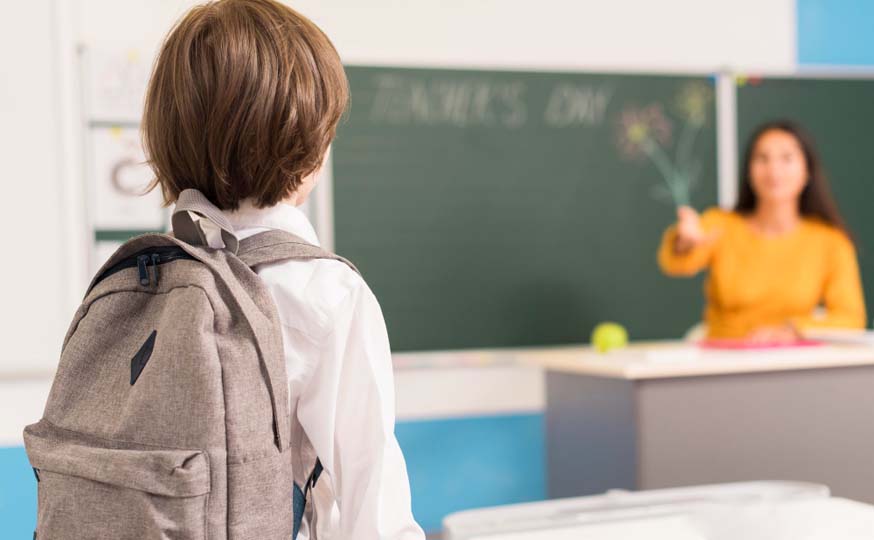
Other Indicators
- Eye Rubbing: Excessive rubbing of the eyes may be a sign of eye fatigue or discomfort, often associated with uncorrected vision problems.
- Tilting Head: Tilting the head to one side or holding objects close to the face to see better could suggest refractive errors or other vision issues.
- Clumsiness: Impaired depth perception due to vision problems may lead to clumsiness or difficulty with activities that require hand-eye coordination.
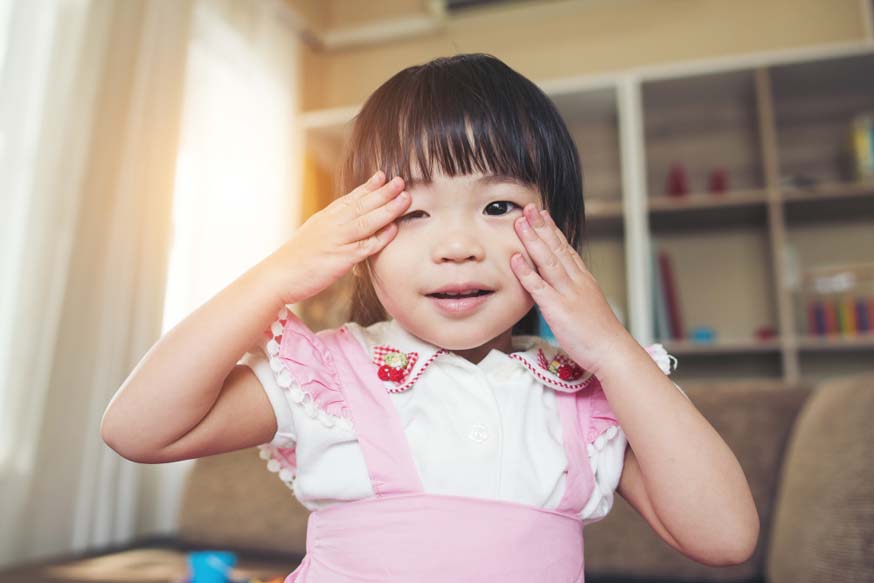
Recognizing these signs early on empowers parents to seek timely eye exams and appropriate eyeglasses for their child, ensuring optimal visual health and academic success.
Getting a Professional Eye Exam
Finding an Eye Doctor
- Pediatric Optometrists vs. Ophthalmologists: Parents can choose between pediatric optometrists, who specialize in children’s eye care, or pediatric ophthalmologists, medical doctors trained in eye and vision care for children. Recommendations from friends, family, or pediatricians can help in selecting a trusted eye care provider.
- Getting Recommendations: Seeking recommendations from trusted sources such as friends, family, or pediatricians can help parents find a qualified eye care professional experienced in working with children.
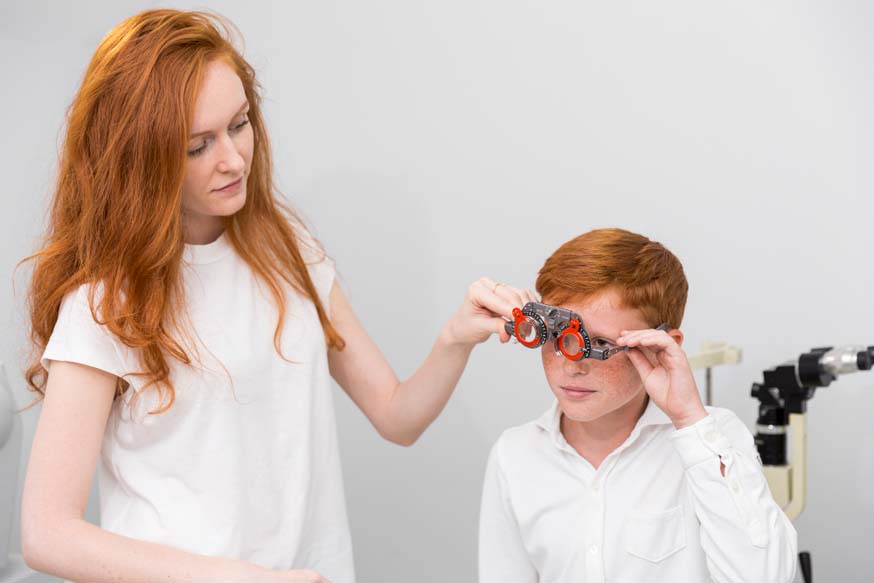
What to Expect
Explain the Exam Process: It’s essential to explain the eye exam process to your child in child-friendly terms to alleviate anxiety. Assure them that the eye doctor will check their vision using fun and painless tests, such as identifying letters or pictures on a chart and looking through different lenses.

Types of Vision Problems
- Nearsightedness (Myopia): Nearsighted children have difficulty seeing distant objects clearly but can see close-up objects clearly. This condition often requires glasses with concave lenses to correct vision.
- Farsightedness (Hyperopia): Farsighted children have difficulty seeing close-up objects clearly but can see distant objects more easily. Glasses with convex lenses are typically prescribed to correct farsightedness.
- Astigmatism: Astigmatism occurs when the cornea or lens of the eye is irregularly shaped, causing blurry or distorted vision at all distances. Glasses with cylindrical lenses can correct astigmatism and provide clear vision.
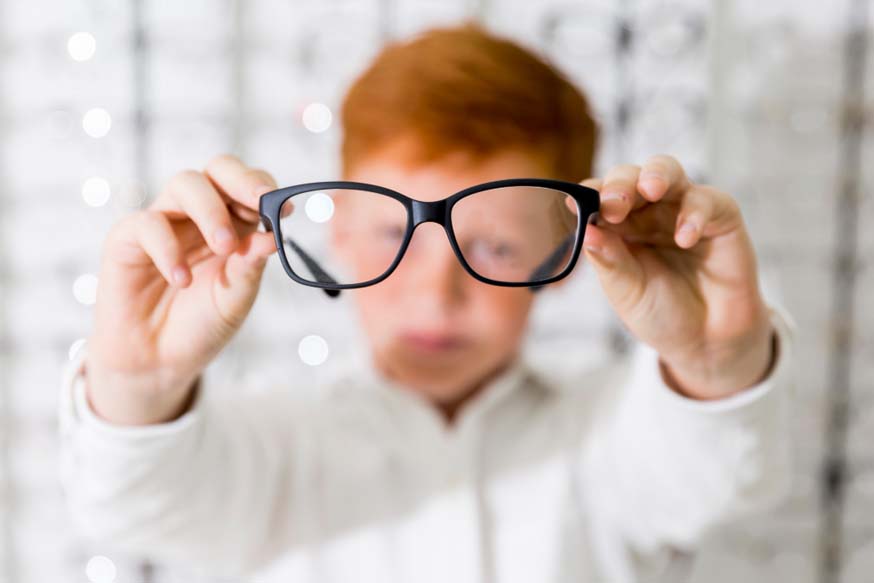
Understanding these common vision problems can help parents recognize potential issues and prepare for discussions with the eye care professional during the exam.
Choosing Eyeglasses for Your Child
Frame Materials
- Durability: Consider frame materials such as plastic or flexible metals that offer durability to withstand the activities of active children while maintaining style.
- Style: Opt for frames that not only provide durability but also match your child’s style preferences, ensuring they feel confident and comfortable wearing their glasses.
- Hypoallergenic Options: Choose hypoallergenic frame materials to minimize the risk of irritation for children with sensitive skin.
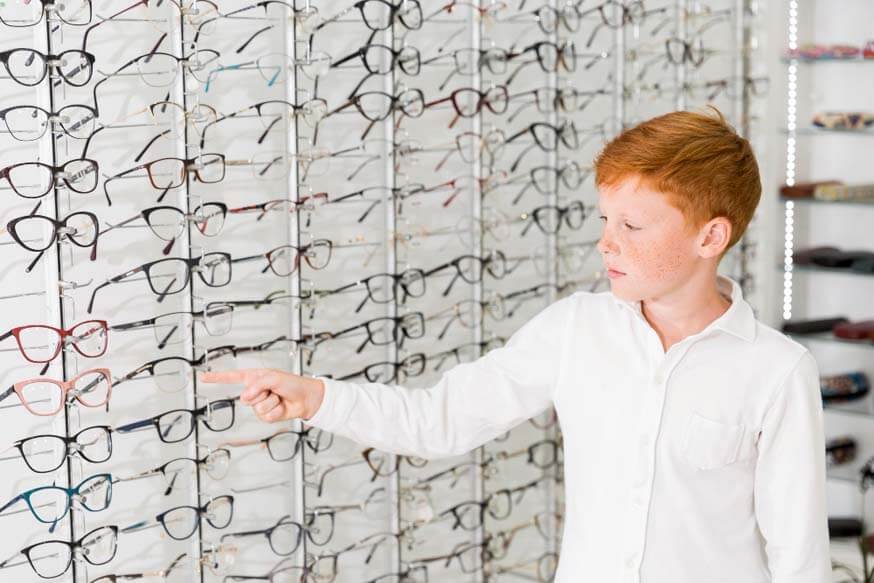
Lens Options
- Scratch-Resistant Coatings: Select lenses with scratch-resistant coatings to prolong their lifespan and maintain clear vision for your child.
- Impact-Resistant Materials: For active kids, opt for lenses made from impact-resistant materials to protect their eyes during sports and other physical activities.
- UV Protection: Ensure that the lenses provide UV protection to shield your child’s eyes from harmful ultraviolet rays, safeguarding their long-term eye health.

Child-Friendly Features
- Spring Hinges: Look for frames with spring hinges that allow flexibility and reduce the risk of breakage, especially for younger children who may be less gentle with their glasses.
- Adjustable Nose Pads: Frames with adjustable nose pads ensure a customized fit for your child’s comfort and prevent slipping or discomfort.
- Cable Temples: Consider glasses with cable temples that wrap around the ear for a secure fit, ideal for active children who engage in vigorous activities.
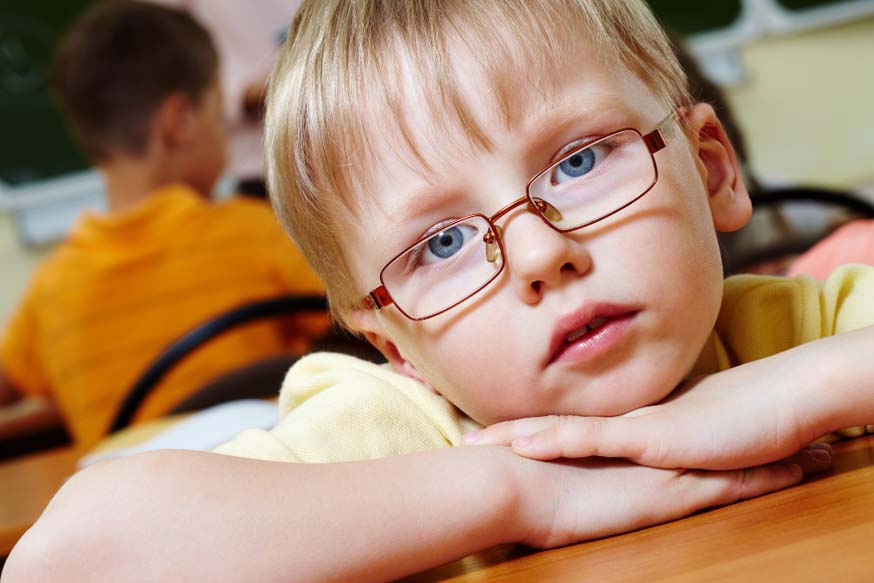
Involving Your Child
Offer Choices: Involve your child in the decision-making process by offering choices within a curated selection of frames. Allowing them to select their favorite style and color can boost their enthusiasm and confidence in wearing glasses, fostering a positive experience.
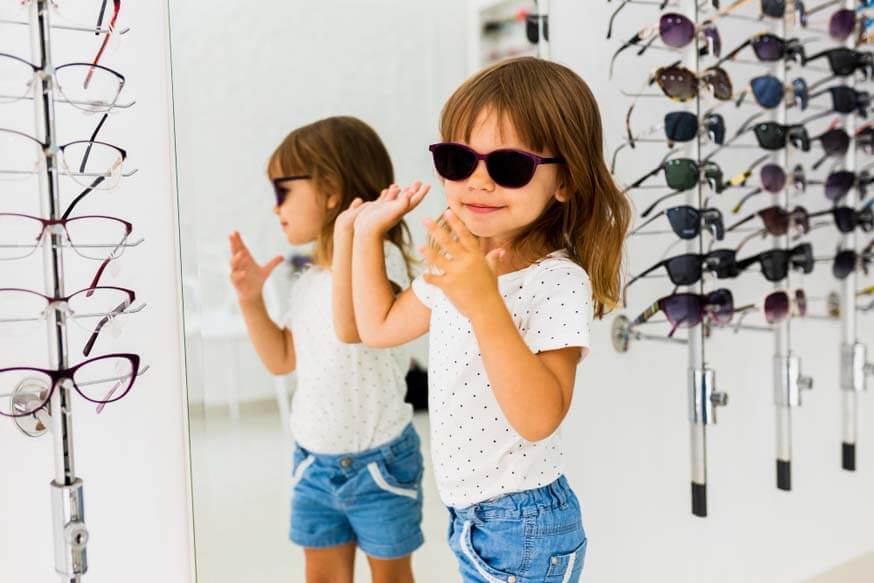
Helping Your Child Adjust
First-Time Wearer Tips
- Start Slowly: Introduce wearing glasses gradually, allowing your child to adjust to the sensation of having them on their face for short periods before gradually increasing wear time.
- Positive Reinforcement: Praise and encourage your child for wearing their glasses, emphasizing how their glasses help them see better and how proud you are of them for taking care of their eyes.
- Address Discomfort: If your child experiences discomfort, address it promptly by checking the fit of the glasses or consulting with their eye care professional to ensure proper adjustments.
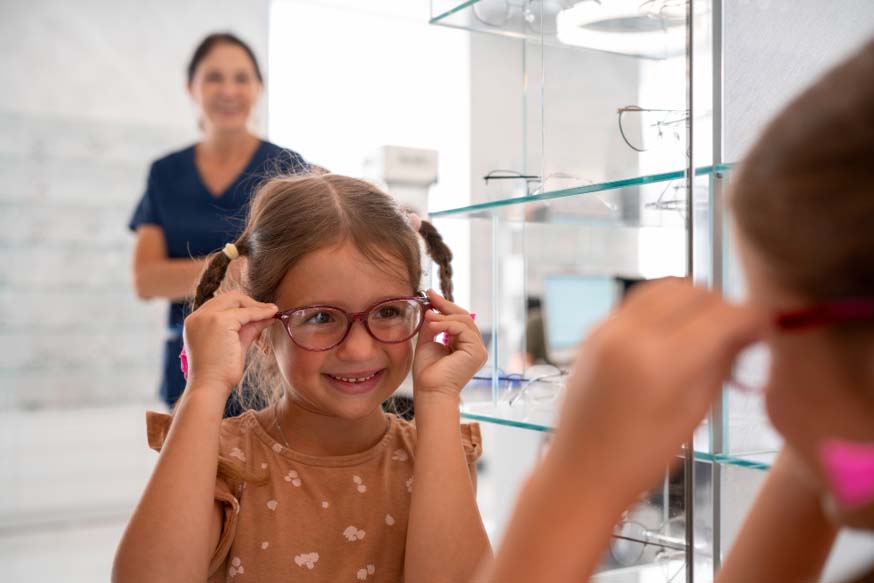
Addressing Concerns
- Discuss Potential Teasing: Openly discuss any concerns your child may have about teasing or bullying related to wearing glasses. Reassure them that wearing glasses is perfectly normal and that many children wear them to help them see better.
- Provide Reassurance: Offer ongoing support and reassurance, emphasizing the importance of their vision and how wearing glasses contributes to their overall well-being and success.
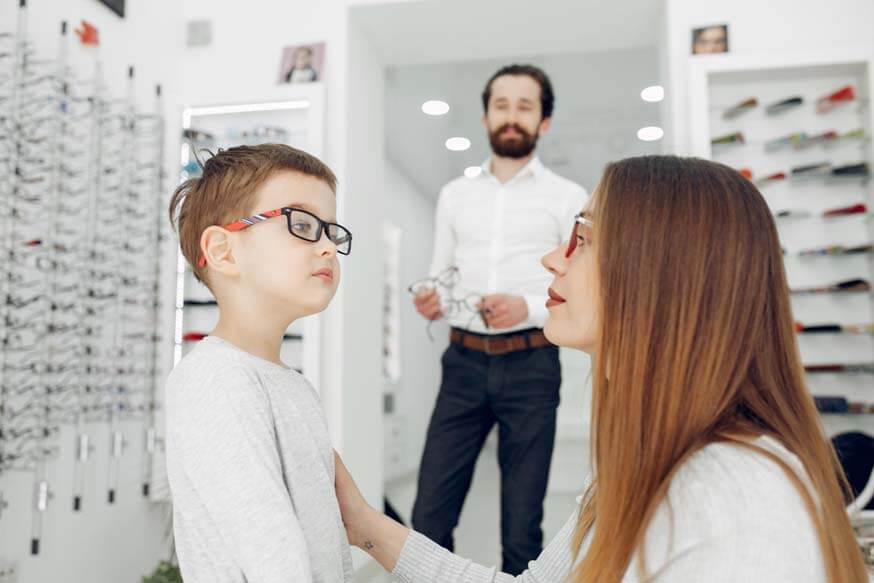
Making Glasses Fun
- Personalize Their Case: Allow your child to personalize their glasses case with stickers, decals, or their name to make it uniquely theirs and instill a sense of ownership and pride in their glasses.
- Eyeglass Cleaning Routines: Establish a fun and interactive eyeglass cleaning routine with your child, involving them in cleaning their glasses regularly with a gentle cleaning solution and microfiber cloth. This not only keeps their glasses clean but also reinforces the importance of taking care of their eyewear.
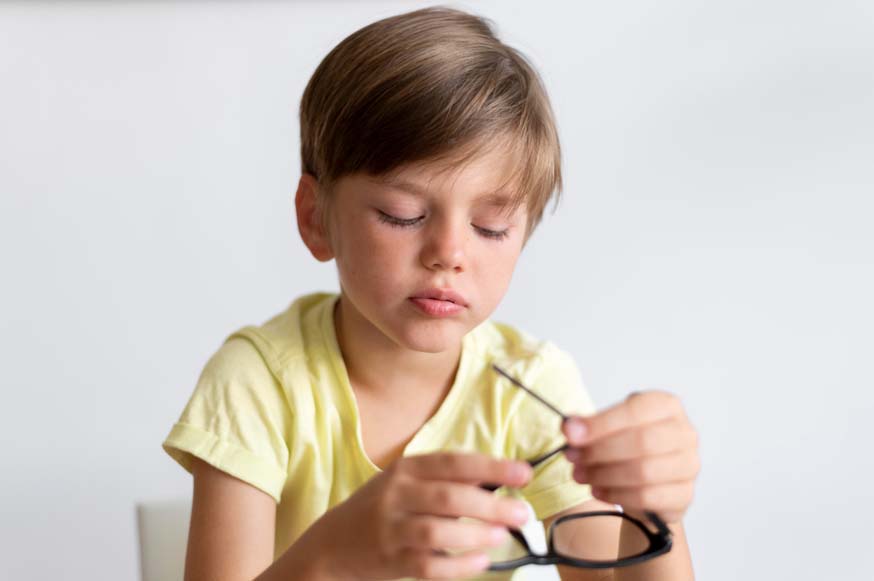
Eyeglasses Care and Maintenance
Proper Cleaning
- Microfiber Cloths: Use microfiber cloths to clean the lenses, as they are gentle and effective at removing smudges and dirt without scratching the surface.
- Gentle Lens Solutions: Use gentle lens cleaning solutions specifically formulated for eyeglasses to clean the lenses thoroughly without damaging coatings or frames.
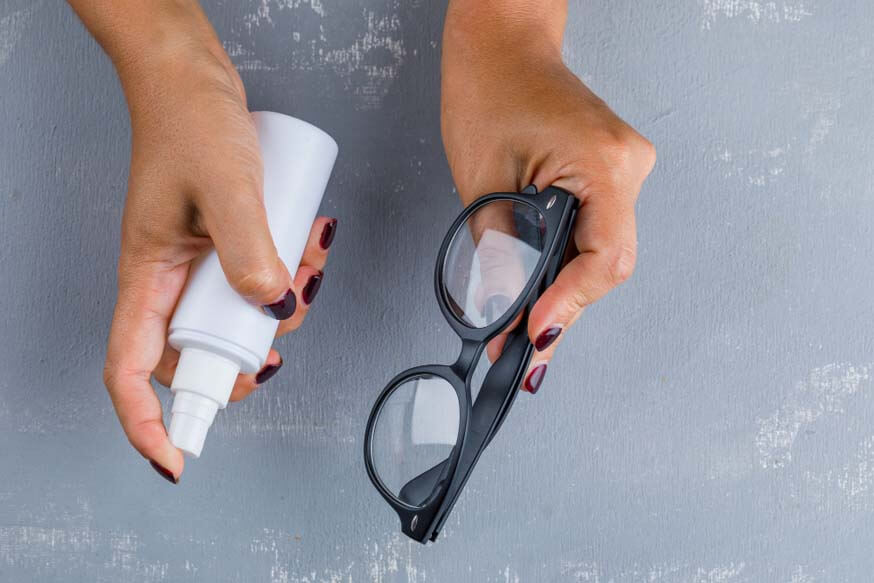
Safe Storage
- Importance of Using the Case: Encourage your child to always store their glasses in a protective case when not in use to prevent scratches, bending, or other damage.
- Avoiding Heat/Pressure: Remind your child to avoid leaving their glasses in places exposed to extreme heat or pressure, such as in a hot car or at the bottom of a backpack, as these conditions can warp frames or damage lenses.
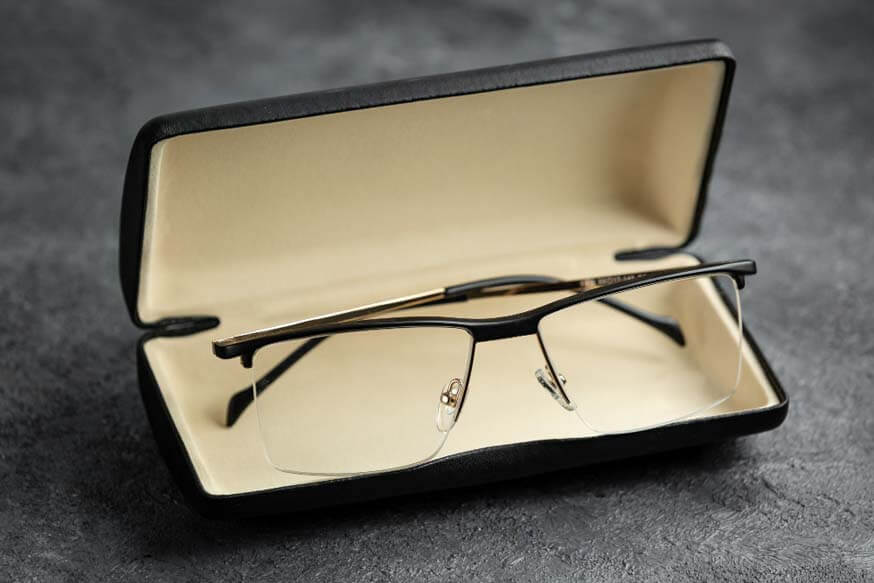
Regular Checkups
- The Need for Follow-Up Eye Exams: Stress the importance of scheduling regular follow-up eye exams with their eye care professional to monitor their vision and ensure that their glasses prescription remains accurate.
- Potential Prescription Changes: Explain to your child that their vision may change over time, and they may need adjustments to their glasses prescription. Regular checkups help detect any changes early and ensure optimal vision correction.
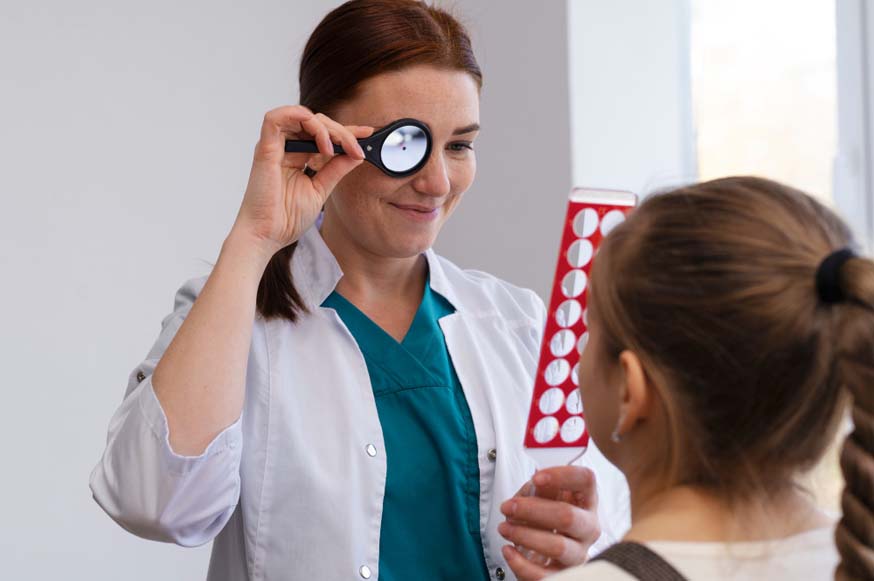
Conclusion
In conclusion, ensuring clear vision for your child is essential for their overall well-being and success. By addressing their vision needs with eyeglasses, parents empower their children to thrive academically, socially, and emotionally. Emphasizing the importance of regular eye exams and proper eyeglasses care sets a foundation for lifelong eye health.

As you embark on this journey, remember that you’re not alone. Seek support from local resources or support groups if needed, and know that you’re taking proactive steps to prioritize your child’s health and happiness. Together, let’s embrace the opportunity to provide our children with the gift of clear vision and a brighter future.


